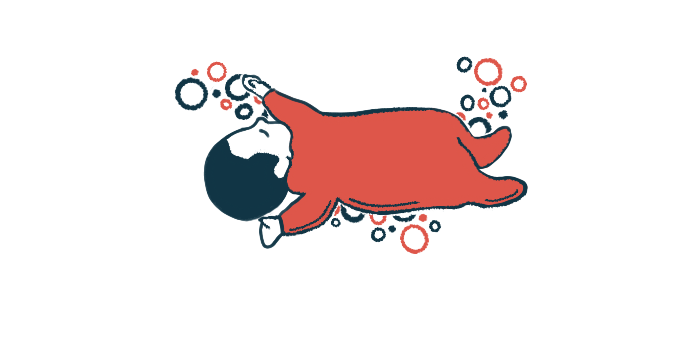Zolgensma safe, most effective when given to newborns: Real-world study
Analysis of 8 children in Italy finds motor gains best in those under 2 months old

The one-time gene therapy Zolgensma (onasemnogene abeparvovec-xioi) safely and effectively treats infants with spinal muscular atrophy (SMA), especially when given within the first two months of life, according to the findings of a real-world, small study in Italy.
Zolgensma “is an excellent therapeutic option for SMA patients” the scientists wrote, adding this work helped them “understand how crucial it is to start treatment as soon as possible after the diagnosis … as the greatest improvements were seen in subjects who received treatment within 2 months of birth.”
The study, “Onasemnogene Abeparvovec: Post-infusion Efficacy and Safety in Patients With Spinal Muscular Atrophy (SMA)—A Fondazione Policlinico Gemelli IRCCS Experience” was published in the journal Hospital Pharmacy.
Gene therapy administered as single infusion into the bloodstream
SMA is caused by low levels of the survival motor neuron (SMN) protein due to a faulty SMN1 gene. The lack of SMN in motor nerve cells leads to the muscle weakness that characterizes SMA.
Novartis’ Zolgensma is approved as a single use gene therapy administered by infusion into the bloodstream. It delivers a working copy of the SMN1 gene to cells to boost SMN production. Clinical trials have shown Zolgensma can slow disease progression and improve motor function outcomes.
Physicians at the Fondazione Policlinico Universitario Agostino Gemelli IRCCS hospital, in Rome, evaluated changes in infants with SMA who were treated with Zolgensma at their hospital.
They reviewed clinical data covering eight of 11 treated infants through February 2023. The other three infants were excluded as they still were under post-infusion monitoring.
At the time these six boys and two girls were treated with Zolgensma, their mean weight was 7.5 kg (about 16.53 pounds) and they ranged in age from 7 days to about 15 months old. The youngest was a boy; the oldest was a girl.
All were diagnosed with SMA type 1, and they had two to three copies of the SMN2 gene, a backup gene that also provides instructions for making SMN protein.
Three evaluations were conducted for each treated child, roughly at one, three, and six months after Zolgensma’s administration. The information collected included patient details such as weight, age at diagnosis, SMA type, evident symptoms, and evaluation findings.
Symptoms assessed included head control; sitting, standing, walking, and feeding ability; and the need for assisted ventilation.
Additionally, the CHOP-INTEND test (Children’s Hospital of Philadelphia Infant Test of Neuromuscular Disorders) was used to assess motor skills, with clinically meaningful responses to the gene therapy defined as an increase in CHOP-INTEND scores of four or more points.
5 infants had four-point increases in CHOP-INTEND scores with Zolgensma
Results then were compared to those seen in the U.S.-based Phase 3 STR1VE (NCT03306277) clinical trial, whose data helped to support Zolgensma’s approval. This study tested the gene therapy in babies younger than 6 months of age with SMA type 1.
Five of the eight infants at the Rome hospital had an increase of at least four points in their CHOP-INTEND score, representing a “clinically significant” response, the analysis stated. One infant, with the maximum score in CHOP-INTEND (64 points) at the analysis’ start, maintained this score at all subsequent follow-ups.
Another child, who initially required noninvasive assisted ventilation, no longer needed such breathing support after a Zolgensma infusion.
At the last follow-up, three patients were able to maintain head control, and five were able to sit for at least 30 seconds without support. One child was able to walk without any help.
While each child’s age when given Zolgensma was not detailed in this study, its researchers noted the “greatest improvements” in those treated within eight weeks of age. As such, Zolgensma’s effectiveness still needs “to be evaluated in patients where it will be administered at a later stage of their lives or in a more critical condition of the disease,” the researchers wrote.
Most of these children — six out of eight — had been treated with Spinraza (nusinersen) before moving to Zolgensma. Spinraza, the first approved disease-modifying therapy for children and adults with all SMA types, is administered directly into the spinal canal every four months. It works by boosting SMN protein production via the SMN2 gene.
No adverse reactions to Zolgensma were reported. One patient undergoing treatment died of causes determined to be unrelated to the gene therapy.
Despite being a small study, findings show that Zolgensma “was safe and improved the clinical condition of the treated subjects,” the researchers wrote.
A future goal, they added, is to collect data on children treated with Zolgensma elsewhere, “to increase the observed sample and obtain further confirmation” of their study’s safety and efficacy findings.








